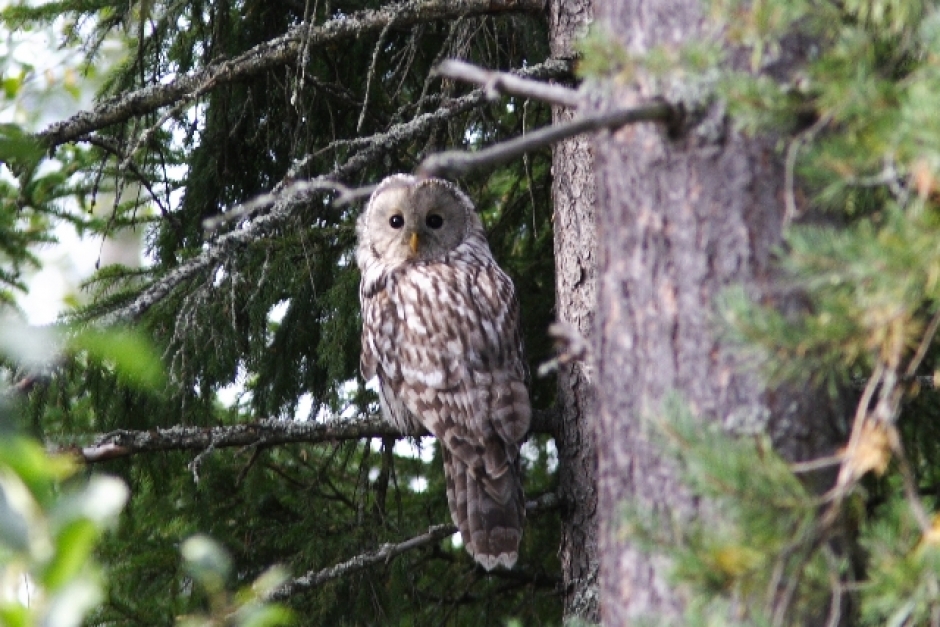Ural owl
Strix uralensis

General information. The Ural owl is an owl species inhabiting old spruce- and mixed type forests. The largest populations in Finland can be found in Hämeenlinna and Pirkanmaa. In Vaasa, however, it is a relatively rare nester with only a handful of observations made during the bird atlas survey years.
The Ural owl is, like other owl species, an early nester. During years with an abundance of rodents it can lay its eggs already in early March. Nesting takes place in abandoned raptor nests or large nesting boxes intended for the common goldeneye. The young leave the nest already before having the ability to fly properly. During this period their mother aggressively defends the brood from intruders coming too close, including humans. They can be especially irritated during nighttime as the young loudly beg their mother to bring them food. The Ural owl is a protected species under the European Union bird detective.
- Length about 50-60 cm
- Nests in tree cavities, abandoned hawk nests and nesting boxes
- Sedentary species
- Feeds on moles, squirrels, birds
Habitat. The Ural owl is predominately a bird of old growth coniferous forests. Particularly in the Kvarken-region it is known for inhabiting remote spruce forests. It can, however, also be found nesting relatively close to human settlements as long as the surroundings are calm.
Distribution in Vaasa. The Ural owl has been observed only in a handful of locations during nesting season. Like other owl species, populations are largest during years with an abundance of rodents, such as field- and bank voles. During springtime owl excursions, the Ural owl can be heard hooing in the Sundom archipelago or forests around Öjen.
